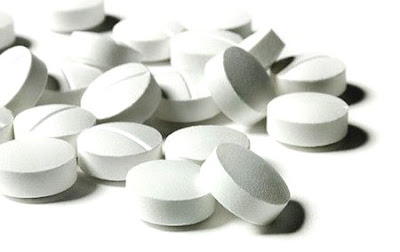What is acetaminophen ?
Acetaminophen or paracetamol is an analgesic and fever-lowering agent. In combination with other medicines paracetamol is also effective against cold symptoms. Paracetamol was first in 1878 by Harmon Northrop Morse and synthesized in 1893 for the first time in medicine by Josef von Mering. The popularity of the drug increased dramatically since 1955. They then discovered that acetaminophen is the active metabolite of acetanilide. Acetanilide was introduced in 1886, but proved too toxic. They went to look for less toxic alternatives in chemical structure closely resembling acetanilide; one of them was paracetamol. Paracetamol The name is derived from the chemical name: Para-acetylaminophenol.
Preparations
Paracetamol is in various dosage forms, whether or not in combination with another agent, is available. The oral form in most countries without a prescription, often in the supermarket.
- tablet, unbranded or Panadol, Dafalgan
- suppository, unbranded, different manufacturers
- beverage, unbranded or Daro for children
- melt tablets, melt tablets Roter 'Dafalgan odis
- powder, Daro headache powder, Lemsip
- intravenously, Perfalgan, Perfusalgan, Paracetamol EC
- effervescent tablet, Dafalgan
Combinations with other agents.
- caffeine, unbranded or Finimal, Panadol Plus, White Cross
- acetylsalicylic acid (aspirin) as Chefarine
- acetylsalicylic acid (aspirin) and caffeine in APC such as tablets
- propyphenazone and caffeine as in Saridon
- pseudoephedrine hydrochloride as in NioCitran
- other combinations are possible
The addition of codeine to paracetamol enhances the therapeutic effect (analgesia), only to a minor extent. With occasional use the advantage is so small, in the case of prolonged use, the disadvantages likely to outweigh the benefits; the development of tolerance and abuse (addiction).
Combinations of analgesics (other than the combination with caffeine or codeine) in the treatment of chronic pain, under the supervision of a physician, frequently applied. For the home user is using them not recommended.
Action
The mechanism of action of paracetamol is still unclear. There are two hypotheses: (1) influencing cyclooxygenases (COX enzymes involved in inflammation) and (2) influencing the serotonergic system; which are, among other nerves that play a role in the sensation of pain.
Paracetamol / Acetaminophen dosage
For healthy adults, the maximum dose of 500 mg 6-8x per day for the tablets (500 mg for chronic use 6x), 3-4x 500-1000 mg for suppositories. There should be a minimum of 3-4 hours between doses to sit in. The leaflet is usually indicated a dosage of up to 6 x 3 x 500 mg or 1000 mg. In normal use, paracetamol is considered a safe drug.
Harmfulness in overdose
Damage to the liver may occur after the ingestion of a single dose of 10 to 15 grams of acetaminophen. In the liver, there are metabolizing enzymes which convert acetaminophen into a toxic metabolite. A liver poisoning can be very painful and last for several days. Taking a single dose of from 20 to 25 grams can be fatal. On the other hand, there are also cases in which the intake of a huge amount of acetaminophen did not cause liver damage. At a one-time intake of more than 70 mg / kg (about 5 grams for adults) the adverse effects are already to be expected. With 140 mg / kg (approximately 10 grams for adults) is seen moderately severe liver damage, and at 200 mg / kg (approximately 14 grams for adults) this is already serious liver damage. The absolute amounts for children are lower than those measured. Also, daily use of the normal dosage can lead to liver damage.
Treatment of overdose
An overdose of acetaminophen, if there is time (within eight hours) is taken there to be treated by a physician acetylcysteine (Lysomucil, Fluimucil). The N-acetylcysteine makes it formed harmful paracetamol metabolite N-acetylparabenzochinonimine there harmless by reacting with it. This metabolite is responsible for hepatotoxicity (liver toxicity). Activated charcoal combined with the laxative sodium sulfate reduces the absorption of paracetamol in the body, but is only useful when it is given after ingestion within four to six hours. When the patient is treated within two hours, gastric lavage is also a good remedy. It ensures that the exits paracetamol still present in the stomach and intestines to the body as quickly as possible, leaving no more paracetamol can be recorded.
Staggered overdose
Regularly a slightly too high a dose, the maximum dose of paracetamol or long-term use can lead to a 'masked' overdose which is not detectable in the blood. The risk of liver damage will slowly builds large, so treatment is urgently needed. As this is less easy to determine than for a one-time overdose is the probability of death possibly even larger.

